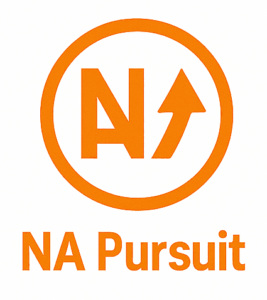The air was dense in the boardroom, laden with the unarticulated query: Are we prepared? It is the year 2024, but the echoes of the silent revolution are still deafening. Monolithic financial institutions hoarding their data like a miser’s treasure are a thing of the past. Now the landscape is splintered, and from the divide springs a new, colorful if messy ecosystem known as Open Banking. Picture, if you can, a thousand streams flowing into a great river — each stream a fintech startup, a consumer app, a challenger bank, all of them fighting for room on your customers’ balance sheets.
Remember the old days? The solitary trip to your bank, a pile of paper, a teller’s hushed tones. Those moments now seem like relics. Those walls have been broken by Open Banking technology. All of a sudden your customer’s financial data is not only yours, it is theirs as well. It’s portable, shareable, ready to groove with the applications that give them a better experience. These Customers Wield Their Data Like A Key —The Key— To Personalized Service.
This is not a future to come; this is present reality disrupting retail banking as we know it. The pressure is on. For others who hold on to obsolete frameworks for understanding the world, the river threatens to sidestep them altogether, leaving them stranded in a stagnant pool. But for those who can adapt, embrace and innovate, the current runs toward opportunity. So the question isn’t will open banking affect you, but how will navigate this new turbulent world? This is the story you, the world, have to tell, the journey you have to understand. Let’s dive deeper, shall we?

Positive Trends – The Winds of Opportunity:
- Hyper-Personalization Takes Center Stage: Picture your financial services not being generic but chiseled to cater to your needs. Thus, the promise of Open Banking. Being able to access and mine user data — with their consent, naturally — enables hyper-personalized offers, budgeting tools, and investing advice. This is not some generic mass mailer stuff. Think bespoke solutions, the sort that make you feel like your bank really gets your life. One clear example of this is how Starling Bank in the UK employs open data to help improve the way individuals might approach their spending — allowing the platform to categorize transactions and encourage proactive savings advice. It isn’t just about providing a better product, it’s about creating an experience.
- The Future of Embedded Finance: The intersection of financial services and everyday life is expanding. Open Banking will usher in the embedding of financial products within non-financial platforms. Think the Uber driver debit card powered by a Fintech, or Shopify access to lending and payment solutions. They’re everywhere, integrated into the user journey as a fabric of financial services. This is not only convenient — it’s revolutionary. It’s about enabling every platform to be a possible point of a financial transaction, which is tremendous potential.
- Innovation unleashed The access through open APIs provided by Open Banking are creating a petri-dish for innovative solutions to be incubated and work. Agile Fintechs competition new players: traditional banks are compelled to be faster, to adapt quicker, to innovate. Companies like Plaid and Truelayer who provide connective tissue.” So it is like this lively bazaar of concept exchanges and unique solutions generation, even push everyone who is in the game to amp their level.
Adverse Trends – The Murky Depths:
- The Security Tightrope: Open APIs are powerful, but they can also serve as entry points for malicious actors. But the risks of data breaches, unauthorized access, and fraud are very real. Businesses pour money into solid security frameworks and endlessly it is a game of cat and mouse. Consumer trust is everything, and the stakes are sky high. Even the smallest violation can instantly drain confidence more fast than a sandcastle at high tide. That’s the perennial balancing act of Open Banking: accessibility versus vault-like security.
- Friction and Complication: When there are so many players, APIs, and regulations to consider, the Open Banking ecosystem can become fragmented and difficult. This can often become a challenging & expensive process that requires a lot of time to integrate, particularly for smaller businesses. The second, navigated with strategic partnerships and deep ecosystem understanding — the fallacy of winning through insurmountable scale. It’s like a jungle out there — careful preparation and the right navigator are key to avoid getting lost out there.”
- Regulatory Unpredictability: The regulatory environment is ever-evolving. Though the underlying purpose is to protect consumers and build the competition, the changing regulations can be a major contributor to uncertainty and compliance costs. Companies need to be agile enough to anticipate this, so they’re not left in the regulatory undertow.
Actionable Insights – Charting a Course:
- Optimistic: Double down on hyper-personalization. Spend in data analytics and AI capabilities to deeply know your customers need. Develop alliances with platforms to capitalize on embedded finance. Create open API ecosystems to stimulate innovation. Be the agile innovator in this world of rapid change, not the dinosaur going extinct.
- Adverse: Reinforce security on both sides. Implement cutting-edge security measures, test aggressively, and proactively guard against future threats. Reducing friction in the integration process, providing easy-to-implement and scalable solutions for businesses of any size. Talk to regulators, join the discussion and prepare your business for whatever situation arises.
The Open Banking market is a fast moving, fun roller coaster. It is the future of financial services, presenting remarkable opportunities and requiring strong resilience. For those smoothly sailing these currents, the rewards are there for the taking. But for those who continue to miss the signals, they may be washed away with the coming tide.
Healthcare: Envision a patient, Sarah, who was just released from the hospital following a complicated surgical procedure. Submerged in medical bills, she was a ship lost at sea. The hospital uses open banking and sends a payment request directly to her bank app (both are encrypted). No more grappling with paper invoices — she sees an instant breakdown of costs on her favorite banking platform. She clicks “approve” and, voilà — the payment happens immediately, alleviating her financial concerns. The hospital, for its part, enjoys dramatically reduced processing times and diminished administrative headaches, such as chasing down late payments, freeing up resources to prioritize patient care over excessive paperwork.
Now: Technology: Imagine a tech startup, “InnovateNow,” that is facing issues with cash flow management. They have accounts all over the place, a logistical nightmare that eats time. They sync all of their accounts into their accounting software using open banking APIs. Suddenly, their financial picture is clear as crystal. Now they are able to predict expenses down to the last dime, detect potential risks in advance, and even optimize their investments like an orchestra in perfect harmony rather than an incoherent cacophony.
Automotives: Let’s imagine Mark, buying a new car. He is tired of the never-ending paperwork that financing entails. Open banking makes that easier. With his consent, the dealership immediately accesses his financial history, verifying his income directly via his bank. Gone is the tedium of Mark going back and forth with the lender; the whole transaction is smooth, almost seamless. The money is approved in minutes rather than days, so Mark is left with the exhilaration of a new car and the gratification of a painless transaction. On the other side, the dealership saves time to close and ends up with much happier customers and clear visibility into purchase power which gives them a better chance of converting prospective clients into buyers.
Phase 2: The Case of SteelForge SteelForge — manufacturing: A large manufacturing company, ”SteelForge,” that heavily relies on complex supply chains exists with various suppliers. Open banking allows them to monitor the real-time financial health of their suppliers. This instant insight acts as a buffer against shocks stemming from supplier fault or liquidity problems, maintaining SteelForge’s ability to avoid halting the production line. These companies improve their bottom line because they can pay faster and when doing so, establish trust and stronger relationships—a lot of that is enabled through data exchange in an instant, or in other words, a heartbeat.
The Starting Point: Creating the Core
So, we saw a clear strategy forming for a number of open banking players in early 2023: Enhanced API offerings. It’s like a digital toolbox, if you will. Companies like Tink evolved their API suites and aggressively expanded beyond basic connectivity. They offered APIs to enable payment initiation, account aggregation, and even complex risk scoring. “We need to be more than just a pipe,” one product manager at Tink said over a virtual coffee, “ we need to offer the tools that spark innovation for our clients.” This approach evolved the platform organically into a broad-based platform that could serve a much wider client base than it originally intended, and with it, potentially drive some synergies if not in the core products themselves. Likewise, TrueLayer made significant investments in upgrading their infrastructure, to ensure better performance and speed of their APIs, transaction latency being a key friction point for user adoption.
The Middle: Reach and Abilities Expansion
Then, entering into mid-2023 and beyond, Strategic Partnerships became the word on the street. Businesses recognized they couldn’t go it alone. For example, Yapily partnered with payment processors and retail platforms to integrate their APIs into their existing workflows. “It’s about meeting the customer where they are,” said a Yapily business development lead at an industry conference, “not expecting them to come to us.” This inorganic approach was a faster market penetration route which opened new customer bases. Plaid also made a series of acquisitions in a similar vein, focusing on financial data verification companies and risk assessment tools, and bringing those capabilities in-house to provide a more complete service. These moves also winnow out potential competitors in the long run.
The End: Future Outlook & Distribution
But by late 2023 and into 2024, it is Vertical Specialization and Data Enrichment. Other companies began to build vertical-specific solutions. For instance, some began specializing in building open banking applications for wealth management companies, emphasizing security in data aggregation for managing investment portfolios. “We saw a niche and we are diving deep,” said a sales director at one such company that makes wealth management APIs. “Generalist offerings are insufficient now.” This home-grown transition demonstrated the industry’s maturity. At the same time, a few companies started offering more advanced data analytics and machine learning capabilities to extract valuable insights from data accessed through open banking, monetizing the insights as new data-driven services. The discussion moved away from raw access to actionable intelligence.

Outlook & Summary: A Glimpse Beyond the Horizon
For policymakers in 2020, imagine a financial landscape, not the monolithic fortresses of today, but a vibrant ecosystem buzzing with opportunity. That’s the direction Open Banking is heading towards. Instead of just using our banks in 5 to 10 years, we’re going to be conducting them, blending financial services into the very fabric of our digital lives. Breathe less hard to use apps and more instinctive experiences – personal finance planners living in our smart watches, mortgage applications that resemble ordering a coffee in ease, and investments that feel tailored to our fancy, not just algorithms.
The seismic shift? Attempting to solve these problems is the same with traditional banks, which had been gatekeepers, and are now becoming contributors. The actual reality needs revelation, as well: it’s not about holding on & white-knuckling the old walls, it’s about ushering into the open door, meaning into the light of this NEW world. It’s about nimbleness, about a willingness to work together, to share data securely and strategically, to become a part of this broader symphony of financial freedom. It’s about evolving from lumbering, brick-and-mortar goliaths into agile, API-led innovators, where the customer — not the institution — is genuinely at the core. So in many ways, the future of retail bank is not the demise of the bank, but its evolution into a strong, personalized service, not merely a provider.
The real question for you though is not whether or not your bank will be around in two weeks but how your bank will be able to survive? Will your bank just bureaucratize, holding onto the remnants of its past, or will it seize the opportunity to embrace and reinvent itself in the exciting age of openness? Is it going to step up to the plate and be the maestro, or will it be just a note in this complex, ever changing weavings of financials? What role is your bank going to play in the revolution to come?






